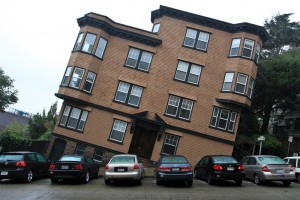I am frequently asked by San Jose real estate investors, both veteran and new, what is best for San Jose rental investments, multi- family homes, single family homes, or condos.
My first answer has been the same for decades: “Are you most concerned with appreciation or cash flow?”
The answer to this question depends on a variety of individual goals. What has changed over the years is what is best for cash flow.
Historically San Jose rental property appreciation has been best in this order:
- Single family home
- Condo
- Multi family home
Historically San Jose rental property cash flow has been best in this order
- Multi family home
- Condo
- Single family home
This long held wisdom that a multi- family home is the best San Jose rental for cash flow is being disrupted by the latest market forces. Right now, CAP rates are better on newer condos than older multi- family homes, and are much easier to take care of.
The CAP rate on a San Jose rental property is a measure of cash flow. To figure it out you take the income minus expenses (assuming no loan) and see what percentage of the price of the property the expenses are. 4% is on the high end of what you can expect in this market, and many investments are in the 2% range for single family homes and 3% for multi family homes.
Let’s take a sale of a duplex in Japan town as an example of a San Jose multi- family sale in 2016.
Sales price was $1,000,000
Expenses including property tax, utilities, garbage, repairs, insurance total $15,200
Income is $43,200
Cash flow: $43,200-15,200 is $28,000
Cap rate is the what percentage of $1,000,000 is 28000 or 2.8%
At this time duplexes are not covered by rent control, but that may happen in the future,
This duplex, like many of the homes in downtown San Jose, is very old. This one was built in 1930. While charming, they need a lot of repair and in many years repairs will be over $2000 a year which was this years estimate.
Now take that same $1,000,000 and apply it to two studio condos in a beautiful downtown San Jose building called Axis. I have a client who does own 2 studio condos at Axis that are rentals so these are real numbers.
Market value: $500,000 each $1,000,000 for both
Expenses including HOA, HO6 insurance, property tax and repairs is $24,000 for both
Income: $
Cash Flow: 57200- $24,000 = $33,200
Cap rate: 3.3%
In this case this new building needed very few repairs, there will never be rent control per California state law, and the HOA covers most of the insurance, water and garbage, and the repairs of the common area.
Here is another example of a clients cash flow at The Brickyard, a less expensive building than Axis San Jose, but a great downtown San Jose rental with the best HOA management company I have ever experieinced.
2 condos worth $370,000 each or $740,000
Expenses including property tax, HOA, HO6 insurance, repairs $19,400
Income: $48000
Cash flow: 3.9 %
Things to watch out for as the building ages is making sure there is enough in the building reserve fund to cover expenses as the building ages.
When the reserves are healthy the future looks brighter for the condos because:
- There is no fear of rent control
- There will be no needed foundation repairs, earthquake upgrades, termite issues etc for the individual San Jose rental investor to deal with in the future as the building is new and the HOA covers these issues.
Of course every case of San Jose rental properties is different, but if you are thinking about buying a San Jose rental property a condo can be a great investment for cash flow, not just appreciation.
If you have any questions about buying a rental property in San Jose please feel free to contact me.
Marcy Moyer
Keller Williams Realty
Specializing in Probate and Trust Sales
650-619-9285
